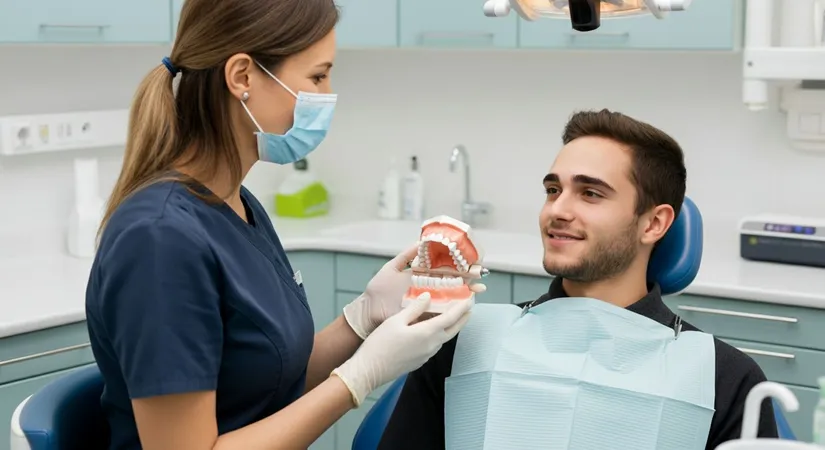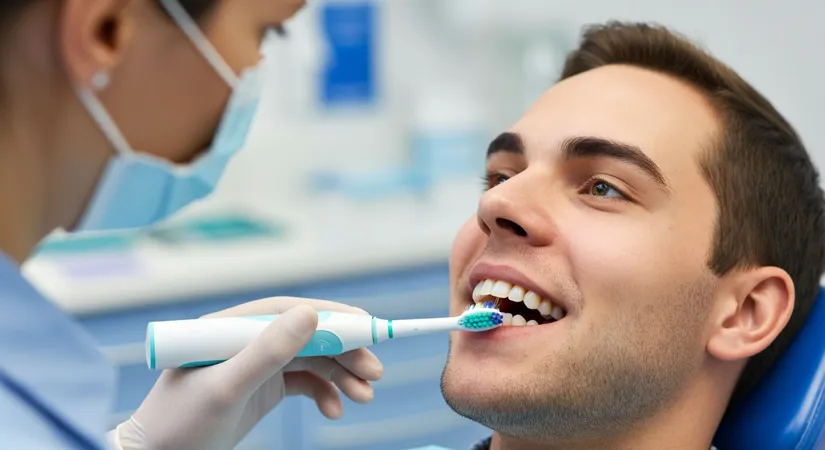Discover the Benefits of Acupuncture for a Healthier Life
Master effective brushing techniques to enhance your oral hygiene. Discover the secrets to healthier teeth today.
Good oral hygiene starts with the right brushing techniques. It’s the foundation of a healthy smile and has a significant impact on your overall dental health. In this guide, we will delve into the best brushing techniques, providing you with a comprehensive guide to maintaining a cleaner, brighter smile. Explore effective oral hygiene practices that go beyond just brushing, ensuring optimal dental care and plaque removal.
Discover the Best Brushing Techniques for Healthy Teeth
Understanding Effective Brushing Techniques
Effective brushing techniques are crucial for maintaining optimal oral hygiene. Using a soft-bristled toothbrush helps protect your gums while effectively cleaning your teeth. Incorporating fluoride toothpaste enhances the prevention of cavities.
Brushing at a 45-degree angle to your gums ensures that plaque is removed from the gum line. This angle allows the bristles to reach areas where plaque tends to accumulate, reducing the risk of gum disease.
Short, circular motions are recommended for cleaning each tooth surface. This method is more effective than horizontal strokes, which can cause gum recession over time. Circular motions help in covering all areas of the teeth, including the hard-to-reach spots.
Key Benefits of Proper Brushing Techniques
- Reduces plaque buildup, minimizing the risk of cavities and gum disease.
- Enhances overall dental health by maintaining clean and healthy teeth.
- Prevents enamel erosion, protecting teeth from sensitivity and decay.
Steps to Brush Your Teeth Properly
- Start by placing the toothbrush at a 45-degree angle to the gums.
- Use gentle, circular motions to clean the outer surfaces of the teeth.
- Finish by brushing the inner surfaces and chewing surfaces thoroughly.

Mastering Dental Care for Optimal Oral Hygiene
Advanced Techniques for Comprehensive Oral Hygiene
Achieving comprehensive oral hygiene requires more than just basic brushing techniques. Incorporating flossing into your daily routine is essential for removing plaque and food particles from between teeth, areas that a toothbrush cannot reach.
Using an antimicrobial mouthwash can further enhance your dental care by reducing bacteria and freshening breath. This step is particularly beneficial for individuals prone to gum disease or bad breath.
Regular dental check-ups are crucial for maintaining oral health. Dentists can identify early signs of dental issues, providing preventive care that can save your teeth and gums from more severe problems.
Essential Dental Care Practices
- Floss daily to remove plaque and prevent gum disease.
- Use antimicrobial mouthwash to reduce bacteria and freshen breath.
- Schedule regular dental check-ups for professional cleaning and examination.
Steps to Enhance Your Oral Hygiene Routine
- Begin by brushing your teeth with a fluoride toothpaste for two minutes.
- Floss between each tooth to remove hidden debris and plaque.
- Rinse with an antimicrobial mouthwash to kill bacteria and freshen breath.

Effective Oral Hygiene Practices for a Brighter Smile
Innovative Approaches to Oral Hygiene
Beyond traditional methods, innovative approaches to oral hygiene can significantly enhance your dental care routine. Incorporating water flossers, for instance, can effectively clean between teeth and along the gum line, offering an alternative to traditional flossing.
Using tongue scrapers is another effective practice. They help remove bacteria and food particles from the tongue's surface, which can contribute to bad breath and plaque buildup.
Additionally, incorporating probiotics into your diet can support oral health by promoting beneficial bacteria in the mouth. This can help balance the oral microbiome, reducing the risk of cavities and gum disease.
Unique Oral Hygiene Tools and Their Benefits
- Water flossers offer a gentle yet effective way to clean between teeth.
- Tongue scrapers reduce bacteria, improving breath and oral cleanliness.
- Probiotics support a healthy oral microbiome, enhancing overall dental health.
Steps to Implement Advanced Oral Hygiene Practices
- Start by using a water flosser to clean between teeth and along the gum line.
- Use a tongue scraper daily to remove bacteria and freshen breath.
- Incorporate probiotics into your diet to promote oral health.
Plaque Removal Techniques: Keeping Your Teeth Clean
Innovative Plaque Removal Methods
Effective plaque removal is a cornerstone of maintaining excellent oral hygiene. While traditional brushing is essential, incorporating additional tools can significantly enhance your dental care routine. Dental floss is indispensable for reaching areas between teeth where plaque accumulates.
Interdental brushes are another effective tool, particularly for individuals with wider gaps between their teeth. These brushes can access spaces that regular toothbrushes might miss, ensuring a more thorough cleaning process.
Regular professional cleanings with your dentist are crucial. These appointments allow for the removal of tartar, which cannot be eliminated by brushing alone, and provide an opportunity for early detection of potential oral health issues.
Key Benefits of Advanced Plaque Removal Techniques
- Reduces the risk of tartar buildup, preventing gum disease and cavities.
- Enhances overall oral hygiene by reaching areas missed by regular brushing.
- Promotes healthier gums and fresher breath through comprehensive cleaning.
Steps to Implement Effective Plaque Removal Techniques
- Begin by using dental floss to clean between each tooth thoroughly.
- Utilize interdental brushes for areas with larger gaps for enhanced cleaning.
- Schedule regular dental cleanings to remove tartar and monitor oral health.
Mastering Dental Care for Optimal Oral Hygiene
Effective Plaque Removal Techniques
Frequently Asked Questions
What are the best brushing techniques for healthy teeth?
How can I enhance my oral hygiene routine beyond brushing?
What are some innovative tools for effective oral hygiene?
Why is plaque removal important for dental health?
How often should I schedule dental check-ups for optimal oral health?
Discover the path to 'Healthy Beauty' with estethica's expert care. Call now for your free consultation and take the first step towards a more confident you!
📞 Call for Your Free Consultation